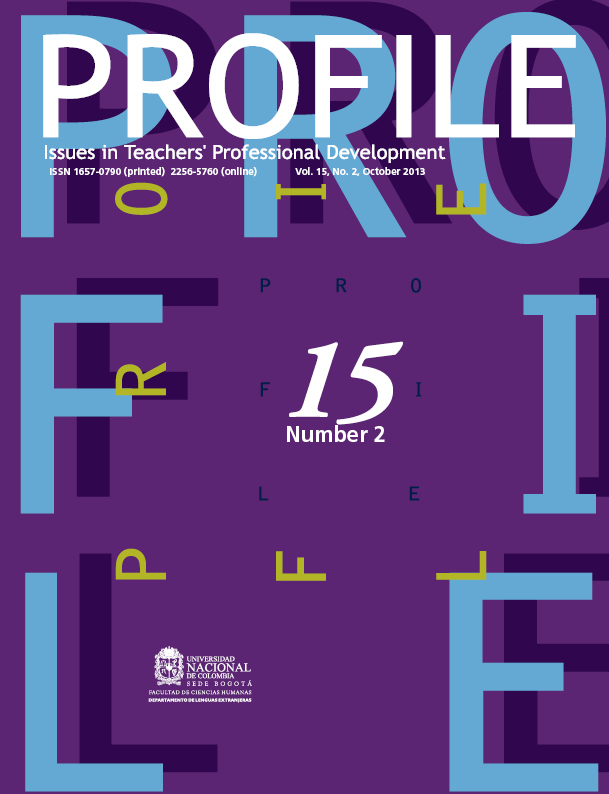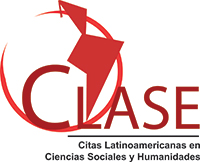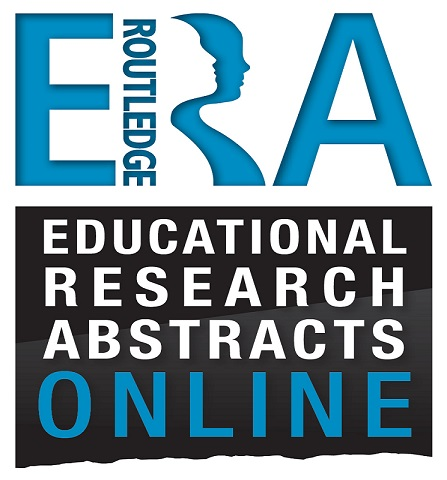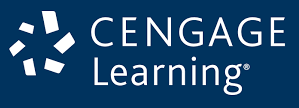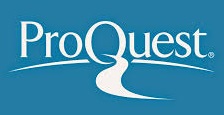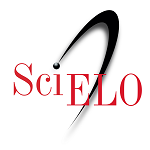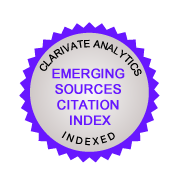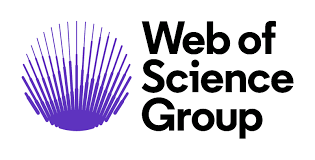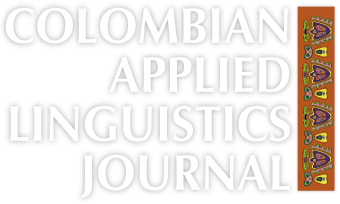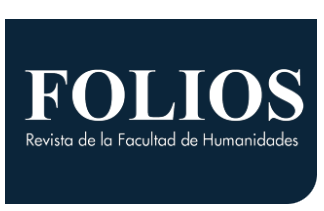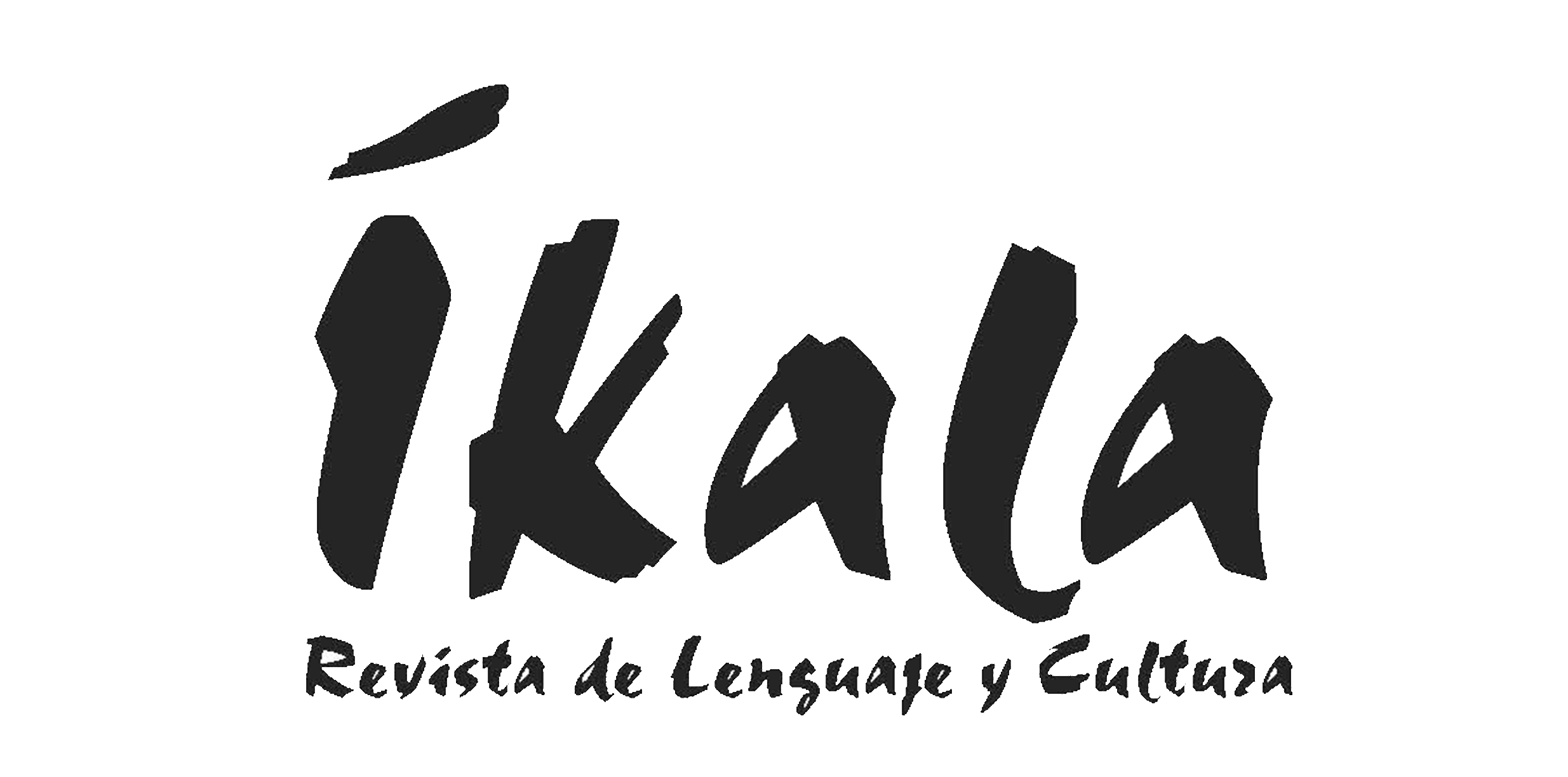Role of Systematic Formative Assessment on Students’ Views of Their Learning
El papel de la evaluación formativa en las percepciones de los estudiantes sobre su aprendizaje
Keywords:
Autonomy, formative assessment, metacognition (en)Autonomía, evaluación formativa, metacognición (es)
This article presents a partial report of a small qualitative research study that explored the students’ views of their learning during and after the implementation of formative procedures such as self-assessment, feedback, and conferences. The article also includes their perceptions about this implementation. The research was carried out with a group of students of English enrolled in an extension program of a Colombian public university. The results showed that formative assessment helped these learners to be aware of their communicative competence and to perceive the situations in which they developed this awareness; it also enabled them to experience success in their learning. Also, learners identified the purposes of this kind of assessment and perceived formative assessment as a transparent procedure.
Este artículo presenta el reporte parcial de un pequeño estudio de investigación de tipo cualitativo que exploró las percepciones de los estudiantes sobre su aprendizaje durante y después de la implementación de una evaluación formativa sistemática y sus visiones sobre este tipo de intervención. El estudio se llevó a cabo en un grupo de estudiantes de inglés pertenecientes a un programa de extensión de enseñanza de lenguas extranjeras en una universidad pública colombiana. Los resultados mostraron que la evaluación formativa ayudó a estos estudiantes a ser conscientes de su competencia comunicativa y a reconocer las situaciones en las que se generó tal conciencia; además, también les permitió experimentar éxito en su aprendizaje. Asimismo, los estudiantes identificaron los propósitos de este tipo de evaluación, la cual percibieron como un proceso transparente.
Role of Systematic Formative Assessment on Students’ Views of
Their Learning
El papel
de la evaluación formativa en las percepciones de los estudiantes sobre
su aprendizaje
Hugo
Nelson Areiza Restrepo*
Universidad del
Valle, Colombia
This article was received on July 1, 2012, and
accepted on May 10, 2013.
This article presents a partial report of a small
qualitative research study that explored the students’ views of their
learning during and after the implementation of formative procedures such as
self-assessment, feedback, and conferences. The article also includes their
perceptions about this implementation. The research was carried out with a
group of students of English enrolled in an extension program of a Colombian
public university. The results showed that formative assessment helped these
learners to be aware of their communicative competence and to perceive the
situations in which they developed this awareness; it also enabled them to
experience success in their learning. Also, learners identified the purposes of
this kind of assessment and perceived formative assessment as a transparent
procedure.
Key words: Autonomy,
formative assessment, metacognition.
Este
artículo presenta el reporte parcial de un pequeño estudio de
investigación de tipo cualitativo que exploró las percepciones de
los estudiantes sobre su aprendizaje durante y después de la
implementación de una evaluación formativa sistemática y
sus visiones sobre este tipo de intervención. El estudio se llevó
a cabo en un grupo de estudiantes de inglés pertenecientes a un programa
de extensión de enseñanza de lenguas extranjeras en una universidad
pública colombiana. Los resultados mostraron que la evaluación
formativa ayudó a estos estudiantes a ser conscientes de su competencia
comunicativa y a reconocer las situaciones en las que se generó tal
conciencia; además, también les permitió experimentar
éxito en su aprendizaje. Asimismo, los estudiantes identificaron los
propósitos de este tipo de evaluación, la cual percibieron como
un proceso transparente.
Palabras clave: autonomía, evaluación
formativa, metacognición.
Introduction
Not until recently has there been an increased
interest in formative assessment (FA) as a student-centered procedure that informs
teachers and students about students’ learning. It is the springboard for
students to take control of their learning and for teachers to align their
instruction to their learners’ needs. There is much literature and
research about FA but little has been reported in our local academic community
on our reflections and practices as teachers regarding FA, its connections to
metacognition and autonomous learning, and the advantages and drawbacks of
implementing it. Some works, however, have been
reported on this issue (Ahumada, Bonilla, &
Del Campo, 2010; Arias & Maturana, 2005; Ariza, 2008; Ariza & Viáfara, 2009; Bernal & López, 2009;
Cárdenas, 2010; Cortés & Sánchez, 2005;
Martínez, 1996; Rodríguez, 2007; Sierra & Frodden,
2003; Torres, 2009). Furthermore, the
findings of some of these studies may partially explain why there is not much
literature on FA locally. Bernal and López
(2009) conducted research about the perceptions of some Colombian languages
teachers on language assessment and the way they use it in the classroom. They
concluded that teachers who did not receive instruction on evaluation did not
relate assessment to enhancing learning. They also concernedly reported that a
few universities in Colombia offered instruction in evaluation to languages
teachers. Moreover, Arias and Maturana (2005) also
conducted qualitative research on the discourses and practices on assessment of
some English teachers in a public university and found out that there were
confusions in their understandings and practices on language assessment in the
classroom, and that the kind of FA they provided lacked systematicity,
rigor, and continuity. These studies may indicate our still limited
understanding of all concepts beneath assessment in both our practices and
discourses.
Autonomy in
Language Learning and Formative Assessment
For this study it was necessary to first understand the
complexity of conceptualizing learner autonomy, how the development of
metacognitive skills may promote it and how some research has explored this
issue. Sinclair (1999), in a survey review of publications on autonomy in language learning,
identified four views of autonomy that should be carefully interpreted within a
particular, social, political, and educational context. One view is that it is
concerned with providing learners with opportunities for exercising a degree of
independence. Another view is that it involves or includes a capacity for
making informed decisions about one’s learning, and this capacity needs
to be developed through introspection, reflection, and experimentation in the
form of “learner training” or some other kind of intervention by a
facilitator. Another view considers that such a capacity can be developed only
through social and collaborative learning, rather than any intervention. For
others, it is a question of learners’ rights, or freedom from constraint,
and represents an opportunity for social transformation. These different views
agree on the fact that autonomy implies students making decisions that
transform them and their surroundings whether there is an intervention or not.
Littlewood (1999) proposes two types of autonomy: proactive and reactive.
The former suggests a “natural” drive of some learners to take
control of their learning and is more present in Western cultures while the
latter implies some kind of input aimed at promoting such a drive in those who
are not autonomous and is particularly for learners in the East Asian cultures.
It may also turn into a preliminary stage towards proactive autonomy. Rivers
(2001) illustrated this proactive autonomy among experienced language learners
taking another language for their first time through an ethnographic study. The
data were gathered in 1993 and 1994 from 11 learners of Georgian and Kazakh at
the University of Maryland at College Park. He found out that these students
exhibited three common types of behaviors: self-assessment of progress and
learner style/learning strategy preference issues, learner autonomy, and
self-directed language learning. These experienced language learners accurately
assessed their learning styles, any learner-teacher style conflicts, and any
learner style conflicts within the class. They demonstrated a high tendency
towards autonomy and used self-directed language learning strategies to modify
the learning environment and aspects of their learning, including type of
input, workload, and course structure. Hence, these behaviors or
characteristics of autonomous learners and other successful language learners,
as Rubin (1975) reported, may serve as models or examples for those who are not
and need to attain those skills necessary to self-regulate their learning. They
can achieve this by providing them opportunities to develop those skills.
In language education specifically, Cotterall (2000, p. 109) argues that “autonomy . . .
is not a goal only for highly committed students but is an essential goal of
all learning.” Little (1999) explains that the development of learner
autonomy depends on the exercise of that responsibility in a never-ending
effort to understand what one is learning, why one is learning, how one is
learning, and with what degrees of success. Hence, autonomy is inherently
related to metacognition. Peters (2000) and McMillan (2010) define
metacognition as the ability of learners to be aware of and monitor their
learning. Rivers (2001) complements this definition by stating that
metacognition embraces two executive functions: self-assessment and
self-management. His reports of metacognition research studies imply that in
formal settings teachers can promote metacognition taking into consideration
the stress on self-assessment abilities before stressing the implementation on
self-management ones. Therefore, metacognitive skills make up part of the
development of autonomous learning and may possibly be triggered through FA.
Assessment is a systematic ongoing process that
determines to what degree of complexity students know and understand aspects of
the curriculum, and how well they demonstrate that understanding. There are
different classifications of assessment of language learning such as
traditional or alternative, or according to the learners’ expected
response (Brown, 2004; Brown & Hudson, 1998; Genesee & Upshur, 1996;
O’Malley & Valdez, 1996; Oosterhof, 2003).
Nonetheless, the most simple and practical classification of assessment relies
on its purpose (Arias, Areiza, Estrada, Marín, & Restrepo,
2010). Then, assessment can become summative
or formative. The former is
comprehensive and attempts to summarize students’ learning at some point
in time or cycle, or at the end of a course or a whole language program (Cizek, 2010; Hadji, 1999; Pryor
& Torrance, 2002). Hadji (1999) points out that
summative assessment is characterized by those tasks which determine if
learners have achieved the goals as regards the standards of a course or a
program. Conversely, the latter is a common classroom procedure that focuses on
the learning process and it is by nature diagnostic, remedial, regulatory,
ongoing, self-regulating, timely, and accurate (Arias et al., 2010; Cizek, 2010; De Ketele & Paquay as cited in Jorba & Casellas, 1997). FA occurs when teachers facilitate
students’ understanding of their own learning in ways that enable them to
learn better, plan their learning by doing something with the information that
is delivered to them in a comprehensible language. Arias et al. (2010) and Cizek (2010) affirm that FA be provided through learning
cycles which allow them to set learning goals and a road map to attain them.
Instead of opposing summative and formative evaluation
as the literature often proposes, Delgado (1998) rather suggests a coherent and
complementary relationship. Assessment is not only referred to as just rewarding
and punishing by grading and calculating these accumulative grades as summative
assessment usually becomes, but as an attempt to understand how students are
learning. This understanding necessarily leads to provide teachers’
feedback to students and promote their self-reflection and self-regulation.
Hence, providing proper FA also leads to accurate summative assessment (Estrada
& Vallejo, 2006).
FA can happen in varied forms such as self- and
peer-assessment, portfolio assessment, or student-generated tests to quote some
examples. However, the ones that seem fundamental in raising students’
awareness as a key to promote self-regulation are students’
self-assessments and teachers’ feedback.
Self-assessment is an “appraisal by a student of his or her own
work or learning process” (O’Malley & Valdez, 1996, p. 240); it
is generally students’ insights on strengths, weaknesses, and ways of
improvement. Watson (2002) reports several reasons for using self-assessment
and justifies it from a learner’s autonomy lens: It is a prerequisite for
a self-directed learner and can raise learners’ awareness of language,
effective ways of learning, and their own performance and needs; and it also
increases motivation and goal orientation in learning. Furthermore, some aspects
of language learning, such as effort and learner beliefs can be assessed only
through self-assessment; and it can reduce the teacher’s work load.
Brown (2004) has identified four types of self-assessment:
assessment of a specific performance in
which a student assesses his or her performance, indirect assessment of competence which is a student’s
perception of his or her general language ability, metacognitive assessment that is strategic in nature and aimed at
planning and monitoring learning, and socioaffective
assessment whose purpose is to reflect on affective factors in learning.
These four types of self-assessments can be presented combinatively
to the learner depending on the particular characteristics and purposes of the
teaching scenario.
If students’ self-assessment is their
perceptions of their learning, teachers’ feedback is the experienced
voice of learners’ progress and constraints. Both learners’ and
teachers’ perceptions are equally important in a democratic classroom and
provide a more accurate panorama of what learners are doing and the input for
students’ self-regulation. Feedback is the result of interaction between
the teacher and students about the learning process. After a test or a
performance task, students always want to know how they did on it. Brown (2004)
supports the idea that scoring and grading would be incomplete if the teacher
does not offer feedback to students with information that will help them
self-regulate their learning and the teacher direct her/his practice as well.
It is possible to nicely “confront”
students’ and teachers’ voices of their learning in a scenario such
as conferences. Brown (2004) refers
to conferences as a routine part of language classrooms that may facilitate the
academic improvement of students. Such interaction offers the great advantage
of one-on-one interaction between teacher and student, and the teachers’
being able to direct feedback targeted to students’ specific needs. For
Brown (2004, p. 265), in a conference “the teacher plays the role of a
facilitator and guide, . . . not of an evaluator. In
this intrinsically motivating atmosphere, students need to understand that the
teacher is an ally who is encouraging self-reflection and improvement.”
This teacher-student friendly talk may be encouraged through generic questions
which often relate to students’ achievements and drawbacks at any cycle
of their learning process, and often seek to offer positive “washback”. Conferences are by nature formative and
are not to be scored or graded.
No one can deny that students’ self-assessment,
conferences, or teachers’ feedback may happen incidentally and have a
positive impact on students’ learning and on teaching; nonetheless, it is
unpredictable when these may occur, but any kind of FA should be planned and
implemented on a regular basis. That is why good quality FA is guaranteed if it
is provided with rigor, systematicity, and continuity
so it attains its purpose (Arias et al., 2010).
Some research on FA and its connections to
metacognition and autonomy has tried to explain this intrinsic relationship to
the benefit of the learner and as a guideline to the teacher. One of the most
well-known works regarding FA is a lengthy literature review by Black and Wiliam (2006). They conducted research between 1988 and
1997 and analyzed empirical work with both qualitative or
quantitative evidence on issues related to the practices and understanding of
FA. They ranged over various age groups across several school subjects and
involved several countries. This lengthy work was not an easy task for the
researchers because the research reports they analyzed lacked sufficient detail
about the practical use of the methods. Furthermore, they argue that successful
implementation of methods of this kind is heavily dependent on the social and
educational cultures in the context of their development, so that they cannot
be merely “replicated” in a different context. Many were the themes
that emerged and, just to quote some relevant to this project, they revealed
that innovations, which included strengthening the practice of FA, produced
significant and often substantial learning gains. Another finding was related
to current teacher practices: The picture that emerged was that FA was weak; in
relation to effective learning it seemed that teachers’ questions and
tests encouraged rote and superficial learning. Furthermore, teachers’
feedback to students often seemed to serve social and managerial functions,
often at the expense of the learning functions. These findings suggest that FA
might be beneficial if it is solely learning oriented and if there is a deep
understanding on its underlying principles and implementation.
In Colombia, it seems, there is no any empirical
research reported in academic journals regarding FA of any kind in the field of
language education, and little qualitative research has been reported. In fact,
the findings of Bernal and López (2009) and
Arias and Maturana (2005) concluded that there is a
need to offer training for languages teachers on assessment of language
learning. On the one hand, Arias and Maturana (2005)
in their research on assessment practices and discourses of 21 English teachers
of two public universities found a confusing coexistence of summative and FA;
an imprecise definition of the linguistic construct in terms of skills;
excessive emphasis on the organizational—not the pragmatic—area of
language knowledge; the importance of non-linguistic aspects in pass/ fail
decisions; the indiscriminate use of assessment and testing; and the scarce
consideration of several assessment task qualities. Moreover, the lack of
teachers’ work stability, of clear assessment guidelines and agreement,
and of formal and systematic re cording of assessment results contribute to
teachers passing students without the required communicative competence. In
addition to that confusing coexistence of summative and FA, the feedback and
self-assessment which are key procedures of this kind of assessment were not
promoted with the rigor, continuity, and systematicity
necessary to fulfill the purpose of FA which is to enhance learning. On the
other hand, Bernal and López (2009) conducted
res e arch about the perceptions of eighty-two Colombian language teachers on
language assessment and the way they used it in the classroom. They found out
that their perceptions and practices were related to whether or not they
received instruction on evaluation as pre-service or in-service teachers. For
instance, those who had it, saw assessment as an integral part of instruction
and as a tool to guide the learning process. Conversely, those who did not
receive any instruction on evaluation did not relate assessment to the
enhancement of learning. They rather reported evaluation as grading, as an
obligation stemming from an administrative request and as a tool to force
students to study what is being taught. The researchers also concernedly reported
that few universities in Colombia offered instruction in language assessment
and general evaluation to languages teachers. Although these studies do not
embrace the reality of Colombian languages teachers because of the number of
teachers who provided data, it is not a coincidence that the findings and
conclusions of these studies suggested confusions on assessment not only in
their discourses but also in their practices, and that from the many
institutions in Colombia that offered language teacher education only a few
offered some kind of instruction regarding evaluation.
However, some qualitative research has been conducted
regarding FA of any kind and its connection to metacognition and autonomy. To
mention some, Martínez (1996) conducted a
small qualitative study on the perceptions of students of ESP courses at a
local university on the role of assessment in students’ self-control of
their learning. The study concluded that when the implementation of assessment
shifted to the process of learning rather than the products of learning,
students were much more motivated to take control of their own learning. In
addition to this, students revealed a capacity for self-evaluation of their
goals, expectations, and weaknesses. For them it was important but not
essential to get a pass/fail mark in terms of their learning; what really
mattered was self-assessing their reading process and self-managing their
learning. In this study it would have been very interesting to observe the
teachers’ voices in relationship to what they observed in those learners.
Sierra and Frodden (2003)
implemented a case study aimed at developing student autonomy through the
implementation of self-assessment and learning strategies in an English course
for students of different academic programs at a well-known university in Medellín. Data were collected from students’
reflections on their linguistic and attitudinal problems concerning their
learning at the beginning of the course, and their self-assessments on
linguistic and attitudinal aspects and students’ interviews at the end of
the course. Some of the themes that emerged evidenced students’ better
motivation for language learning, positive attitudes towards their learning and
consequently more responsible learners which entitled them to improve their
linguistic performance. They also increased their commitment towards the course
and began to incorporate metacognitive strategies such as planning and
evaluation of their learning process. Another important finding to highlight is
the idea that for promoting these positive achievements it is essential that an
autonomous teacher, acting as a facilitator, provide psychosocial and technical
support. For the first function the teacher requires some personal qualities:
the capacity to motivate learners and the ability to raise learners’
awareness. Technical support is related to helping learners to plan and carry
out their independent language learning, helping learners to evaluate themselves and helping them to acquire the skills and knowledge
needed to plan and evaluate their learning. This study clearly shows the
relationship between FA in the form of self-assessment aimed at promoting
metacognition and self-regulation and at the same time provides some insights
on the role of teachers’ feedback provided with the sole interest of
enhancing students’ autonomous learning.
In a qualitative study by Cortés and
Sánchez (2005) on profiles of autonomy in the field of languages, they
analyzed data from four public university students of a language teacher
education program through classroom observations, interviews, and surveys. One
of the main findings was that autonomous learners self-evaluated their
learning, spotted their weaknesses and strengths, monitored their learning in
their pursuit of attaining learning goals, set up learning goals and considered
self-evaluation necessary for improvement. Admittedly, literature has widely
shown the characteristics of autonomous learners as this research successfully
did in the local context but it would have been very enlightening if it had
envisaged how to promote autonomous learning in those learners who were not yet
autonomous.
Rodríguez (2007), in a preliminary report of an
action research project with a group of 21 EFL learners at a higher education
institution which consisted of the implementation of self-assessment practices,
analyzed students’ samples, journals, and interviews. In one of his
findings, he reported positive insights as regards the application of
self-assessment materials. Students’ self-reported that they had the
opportunity to reflect on their weaknesses and strengths. Likewise, they
suggested self-assessment practices as a procedure to be implemented across the
different levels in the institution and agreed on the fact that self-assessment
helped them improve and overcome many of their learning difficulties they had
before the implementation. Unfortunately, as a preliminary report, it neither
stated the teachers’ views of students’ improvement as a way to validate
this finding nor the role of the teachers’ feedback.
Method
This study followed a qualitative-exploratory,
descriptive, and interpretive approach (Bonilla & Rodríguez, 1997;
Burns, 1999; Johnson, 1992; Leedy & Ormrod, 2001) characterized by an intervention. The study
aimed at observing, understanding, and interpreting the role of FA on
students’ views of their learning and their views on this kind of
assessment. The questions that guided this study were:
• What
is the role of the implementation of systematic FA on students’ views of
their own learning?
• How
do students perceive this implementation regarding their learning?
The Context
This study took place in a foreign language learning
program of a public university in Medellín,
Colombia. At the moment of implementation the English program offered a basic
program of 10 levels, a 40 hour course each level and some other advanced
courses. The program was based on a communicative approach aimed at providing
students with the necessary tools to communicate in everyday situations related
to social and professional life situations and entertainment.
Participants
Nine students signed a consent form; they were three
male and six female students who enrolled as beginner learners of English.
Their ages ranged from 18 to 40 years old and they came from very heterogeneous
social and educational backgrounds. Their interests in studying English were as
varied as their backgrounds; some had an intrinsic motivation to learn, others
wanted to learn as a requirement of their current or future jobs or careers,
others started studying a foreign language while they could enroll in an
undergraduate program in a university, and others took the course as a
preparation to travel to an English speaking country.
Implementation
of FA
As a teacher of a 40-hour course, I implemented a
cycle of FA which consisted of different assessment tasks. The first assessment
task consisted of a role play called Survey
in the English Classroom; it was a survey of student pairs and the
objective was to ask and provide personal information in English as surveyors
and surveyees. The second was a written task called Writing an E-mail/Letter in which students had
to write an email/letter to their parents reporting the behavior of a younger
brother/sister. After each task, and without knowing my report on their
performance, learners filled out a self-assessment form of their work in that
particular task (see Appendix A).1
The form had generic questions about whether learners reached the expected
objectives or not and possible ways to overcome their difficulties. Then, each
student requested a short conference with me, during class time, in order to
compare what they had self-assessed and what I had assessed on their
performance. After this short talk, some students, by their own initiative,
decided to do some remedial work if they considered it necessary. At the end of
the course, students took an institutional final exam at the end of each level.
Later, students filled out a final self-assessment form of their communicative
competence, plans to improve, and whether or not they considered they had
passed the class objectives (see Appendix B).2 Finally, we had a conference whose objectives were to
find out about their perceptions of their learning process during the course
and insights about the impact of the implementation (see Appendix A). Table 1 summarizes the cycle of the
implementation in chronological order.

Data
Gathering and Analysis
During the implementation phase, data were in the form
of a collected document relevant to the research context gathered from the
participants’ self-assessments and a representation of verbal recordings
(Freeman, 1998) which was a transcription of a semi-structured audiotaped
interview with students after the course was over (see Appendix B).
The instruments served to describe the role of FA on students’ learning
and their perceptions about this form of assessment. The analysis of data
combined inductive and deductive approaches in terms of the presence of each
category in the participants’ perceptions. In order to enhance the
validity and reliability of the study (Burns, 1999; Freeman 1998; Johnson,
2002; Leedy & Ormrod,
2001) data and methodological triangulation was applied.
Findings
Data yielded meaningful information to describe the
role of FA on students’ views of their own learning and their perceptions
about its implementation in the course (see Figures 1 and 2).

The Role of FA on
Students’ Views of Their Learning
One of my interests throughout this study was to
inquire about how FA may influence students’ perceptions about their
learning. All data collection instruments served to build these perceptions and
draw conclusions about the effectiveness of this kind of assessment for
enhancing their metacognition and consequently their autonomous learning.
Mainly, students reported FA helped them become aware of their weaknesses and
strengths in their communicative
competence3 and of the situations in which
this awareness arose; and thanks to FA they experienced a sense of achievement
because they realized they had learned.
Strengths and
Weaknesses in Communicative Competence
All instruments but the final self-assessment task did
not directly request students to report the weaknesses and strengths of their
communicative competence (see Appendixes A and B). Then, students’ accounts of their learning were more
a by-product of their reflective skills encouraged by very generic prompts.
Data depicted a recurrent tendency to refer to strengths in pragmatic knowledge
in a far much higher frequency than those in organizational knowledge.
Conversely, there was a more recurrent tendency to refer to their weaknesses in
terms of organizational knowledge than pragmatic knowledge (see Table 2).

The fact that students provided specific information
on their strengths and weaknesses in relationship to what is being learned
supports the idea that students were able to assess their learning by making
explicit that knowledge and those abilities through procedures that helped them
think and reflect on what is or is not being learned. It is not surprising that
they referred more often to pragmatic knowledge as regards their strengths and
organizational knowledge as their weaknesses because during teaching there was
far more stress on communication rather than on a descriptive study of the
language as the main learning goals; organizational knowledge was presented as
a part of what is required to attain communication.
What did I learn
exactly? I learned to introduce myself and request information from other
people, who they live with, what they do, their names and ages, if they have a
family and children, their marital status, if they work or go to school.
(Interview to Student 1, Page 1 transcription)
My main
difficulties were the pronunciation, asking questions, and saying numbers,
using the possessive pronouns instead of the personal pronouns, saying some
letters of the alphabet, and the intonation in questions. (Self-assessment
instrument of Task 1, Student 3)
Awareness of
Situations in Which Students Realized Their Strengths and Weaknesses
Only data gathered from students’ interviews
confirmed the situations that resulted in this awareness. Their awareness came
to light through different situations which not necessarily involved FA procedures
such as assessment tasks, self-assessments, conferences, or remedial tasks, but
also classroom situations different from FA procedures, some others outside the
classroom and others they did not specify (see Table 3).

Regardless of the situations in which students’
insights about their learning process emerged, the fact that students reported
them through self-assessment instruments and the interviews suggests that the
habit of having students exposed to FA and making explicit what they are
learning may have triggered an awareness of what they were able to do or not do
with the language and what they knew about the language in various situations:
T: How did you realize those difficulties?
S: By the self-assessment tasks and those assessment tasks we had with my
classmates I realized that it was difficult to understand them; and by sharing
with the teacher.
T: Sharing what with the teacher?
S: Well, talking to the teacher I learned that it was hard for him to understand
what I said because I did not pronounce well. (Interview of Student 2,
Audiotape 1, Page 6)
T: What experiences made you become aware of that?
S: Classroom experiences specially because in the street one does not have the
chance to interact with people who speak English, but in the classroom one
realizes that one has made a good progress and that what one has been taught is
really helpful. (Interview of Student 1, Audiotape 1, Pages 1-2)
T: How did you become aware of your progress?
S: Mainly because before I was not eager to write but writing about what I do,
like my daily routine, I managed to do it and was able to say that I do this or
that someone does that, what he or she likes, what I like to do.
T: What activities helped you realize that progress?
S: Writing about the daily routine, I had never written my routine in English.
It was there that I said to myself that I had learned and had some basic
elements to start a conversation; and when we worked with our partners I
realized I can speak about others. (Interview of Student 6, Audiotape 1, Pages 21-22)
T: What events made you realize what you have
achieved?
S: Chatting through the Messenger because sometimes I used to hang around
trying to use English and failed to, but now I can; and many times by listening
to music, talking to other people and no more. (Interview of Student 9,
Audiotape 1, Page 9)
Sense of Success Through FA
Most students also experienced a sense of success
through FA because they were aware of having achieved something and this
awareness arose during FA procedures. In the inter views, seven students
reported a degree of satisfaction because they realized they had learned thanks
to FA. Students reported some learning outcomes and a kind of satisfaction
during different stages of the cycle of FA. This success is evidenced in the
different instances used to assess their communicative competence: In the first
task, the role-play Survey in the English
Classroom, seven students achieved the objectives of the task and two
agreed on the fact that they did not achieve the task successfully but
requested a chance to remediate; and in the remedial work they evidenced they
had corrected their problems and achieved the learning outcomes of the task. In
the second task, Writing an E-mail/Letter, all students
successfully completed the task and all of them corrected the minor language
problems they had experienced after the conferences. Finally, in the final
exam, students demonstrated they were able to use the language properly in the
communicative situations proposed for the level. These students passed the
course with the basic language tools to use the language properly although they
evidenced and self-reported having some language difficulties still:
T: How did you achieve the possibility of catching up
with what you should improve?
S: Well, I mean, correcting the mistakes…and then we analyzed and if they
were still wrong, I corrected them again. Sometimes one is assessed, and it is
just a mark and one did not identify what was wrong, and then one does not
correct oneself. And here if it was to correct two or three times, then it was
corrected. (Interview of Student 3, Audiotape 1, Page 3)
T: How did you discover having chances to do some
remedial work when you failed in one assessment task?
S: One learns from mistakes. I like that and it was very appealing. I had a
second chance then we analyzed my writing and I rewrote it and there was still
another mistake and I rewrote it until it was fully correct. (Interview of
Student 5, Audiotape 1, Page 20)
Students’
Views of FA
Another main concern I had throughout this study was
to explore students’ opinions about the implementation of FA and if it
actually fit its purposes. Analysis of data from interviews with students
yielded three main findings. Firstly, students reported FA as a procedure that
helped them identify their weaknesses and strengths. Secondly, students
considered FA as a transparent process in terms of how their learning outcomes
and difficulties were reported and the accuracy of the reports of what they
actually learned.
Purposes of FA
Students repeatedly asseverated the purposes of FA as
a procedure that mainly helped them identify their weaknesses and enhance their
learning. They barely indicated FA was intended to spot their strengths.
However, in different stages in the course, students were able to report their
strengths and weaknesses through self-assessment procedures along the course,
namely, self-assessments, conferences, and the final interview which evidenced
some of the purposes of FA, that is, to detect students’ strengths and
weaknesses related to their communicative competence and enable them to make
informed decisions about their own learning (see Table 4).

The fact that most students did not see FA as a
procedure that helped them identify their problematic areas even though they
were asked to do so in different stages of the cycle was unexpected. This may
be due to the fact that in their previous learning experiences, students were
used to being assessed and tested and the results of these procedures
highlighted what they mainly did wrong or the main difficulties they had. It is
as if learning were “measured” as to what students could not learn
first instead of what they actually learned:
T: Do you think making self-assessments is effective?
S: I think it is, I know what I’m failing in. I
think that without doing self-assessment as proposed in the classroom, one is
not able to self-asses on his own. (Interview to Student 2, Audiotape 1, Page
7)
FA as a Transparent
Process
In the interviews, all students identified FA as a
transparent process. This was mainly because they built their own visions of
their communicative competence and then they compared them with their
teacher’s vision in order to agree on their learning outcomes and
difficulties. Although the reliability of students’ self-assessment
results in relation to their communicative competence was not the objective of
this research, the fact that students in all stages self-reported their
learning outcomes and difficulties honestly, made the process transparent.
Moreover, the fact that later through conferences they compared what they
self-assessed and what the teacher had observed to agree on what they did or
did not learn made the procedure far more transparent and the assessment
results more accurate and reliable:
T: How do you feel talking to me when we compared your
self-assessment with the assessment I completed about your performance in one
task or during the whole course?
S: Usually, we agreed on what I had spotted like my weaknesses. It was like
confirming what I had to work on.
T: Did you think that talk was effective?
S: Yes it was. Because if one lies, one does not value what one really has to
work on and one would go on regardless that. One has to confront oneself and
with the teacher one analyzes, one has to encourage oneself to overcome those
difficulties and that is an incentive to learn. (Interview to Student 4,
Audiotape 1, Pages 14-15)
In conclusion, FA did help learners form a picture of
their learning regarding the strengths and problems of their communicative
competence and perceive the situations in which they developed that awareness
including those that exposed them to FA; additionally, it endowed them to
experience success in their learning. Also, learners labelled
the purposes of this kind of assessment as mainly to identify their weaknesses
and improve, and barely to identify their strengths. Furthermore, learners
observed FA as a transparent procedure.
Pedagogical
Implications
Even though we teachers all provide FA in many ways,
the lack of systematization and clear focus as regards its purpose is
self-defeating. At some point in our careers, we have failed to recognize the
formative nature of assessment, its underlying principles and the most suitable
alternatives for implementing it in the classroom as the findings suggested by
the results of Arias and Maturana (2005), Bernal and López (2009), Black and Wiliam
(2006). This implementation is not a model but an example of the principles
that guide FA. Clearly, the systematic and rigorous implementation of FA (Arias
et al., 2010; Cizek, 2010) by asking students to
self-assess their learning, by providing feedback generated by students’
and the teacher’s insights about their learning, and by encouraging
students to do something with that information gathered for the benefit of
their learning, actually fostered the self-regulatory attribute of this kind of
assessment (Arias et al., 2010; Cizek, 2010; De Ketele & Paquay as cited in Jorba & Casellas, 1997). This
kind of proposed assessment also went beyond grading and attempted to
understand students’ learning from the teacher’s and the
learners’ points of view. These different voices also helped to provide a
more accurate summative assessment as claimed by Estrada and Vallejo (2006),
who considered that proper FA leads to accurate summative assessment. In the
end, proper FA in the classroom focuses teachers’ and learners’
attention on learning and not on grades, scores, or pass/fail marks.
Equally important, there is no doubt that the path to
autonomous learning is the learners’ exercise of his/her responsibility
to understand one’s learning (Little, 1999); but it is the
teacher’s responsibility to provide learners with those opportunities to
exercise it, especially if they are those reactive autonomous learners as Littlewood (1999) coins them. Therefore, FA is a way to
provide those opportunities as the participants of this study experienced: They
self-assessed their learning in different learning cycles, received
teacher’s feedback in a friendly and democratic atmosphere by their own
initiative, tried to overcome their problematic areas, and had enough
transparent criteria to decide on their readiness for their next learning
challenge. In order to attain those desired autonomous behaviors from these
students they, as stated by Rivers (2001), focused on the development of
self-assessment skills which are prior to self-regulation. In addition,
encouraging learners to self-assess their learning first and promoting their
self-regulation later were required to make learning explicit. Accordingly,
instruction as well as self-assessment also stressed the use of some metalanguage to refer to learning. These learners started
experiencing the capacity that autonomy involves as a certain range of highly
explicit behavior that embraces both and the content of learning as explained
by Little (1999).
The FA proposal somehow complied with Little’s
view (1999) that in the autonomous classroom it is essential that the learner
be stimulated to develop an awareness of the aims and processes of learning and
to develop a capacity for critical reflection, which also implies having
students reflect on their strengths/ weaknesses and progress in various
linguistic skills. Then, the participants in this study were able to describe
the language from the organizational and pragmatic knowledge and how they were
developing their communicative competence. Unfortunately, because of its small
dimension, this study could not explore, observe, and describe how learners
kept an eye on how they monitored their learning strategies for example, but
rather in what they were learning and to what extent. The development of
metacognitive skills at the level of strategy assessment as proposed by Leaver
and Oxford (1996) is another key element that needs special attention from the
teacher to be introduced regularly and systematically as part of FA.
Teachers can engage in systematic FA regardless of the
load of work they think it would represent; providing FA in the classroom helps
teachers and learners monitor their learning in more practical ways. Teachers
do not have to keep track of the students’ learning process on their own;
involving students in monitoring their progress also helps teachers to keep
track of students’ progress easily. Self-assessment instruments can be
recycled and/or reused (as we usually do with much of our teaching material)
every time students are assessed. In advance, students manage to assess their
learning without having to wait passively for their teacher to mark exams,
record and report the results. Later, through a short but effective
teacher-student dialogue during class time, they can discuss and agree about
their learning. This process can become part of the classroom routine as many
others without requiring extra work from the teacher. Giving room to FA as part
of our teaching routines may be time consuming at the beginning but practical
and rewarding in the end.
To sum up, actively involving students in their
assessment by asking them to describe their learning gains and constraints, and
by giving value to the voices in their own learning regarding the expected
outcomes of the course program guided a very local and small group of people to
experience a sense of democracy in the classroom. A call for more democratic
procedures is a need and a must as a way to promote a much more humanized
society. Simple but meaningful classroom procedures may guide us to meet some
of our ideals.
1 Students filled out this form in Spanish since they
were beginners and their responses were translated from Spanish into English
and the questions for the interview are also a translation in English from the
original version in Spanish.
2 Students filled out this form in English since they
mainly had to mark options and could write comments in Spanish, their native
language. The interview was in Spanish and the quotes from this interview were
translated from Spanish into English for this article.
3 For the analysis of students’ self-assessment
of their communicative competence I used Bachman and Palmer (2002) as a
reference.
References
Ahumada, L., Bonilla, M., & Del Campo,
M. (2010). An approach from
formative to constructive evaluation through an autonomous learning process. HOW: A
Colombian Journal for Teachers of English, 17, 145-164.
Arias, C., & Maturana,
L. (2005). Evaluación en lenguas
extranjeras: discursos y prácticas [Evaluation
in foreign languages: Practice and discourse]. Íkala, Revista de Lenguaje y Cultura, 10(16),
63-91.
Arias, C., Areiza,
H., Estrada, L., Marín, J., & Restrepo, E. (2010). Sistema de evaluación en lenguas
extranjeras [Foreign languages
evaluation system]. Medellín, CO: Editorial Universidad de Antioquia.
Ariza, A. (2008).
Unveiling students’ understanding of autonomy: Puzzling out a path to
learning beyond the EFL classroom. PROFILE
Issues in Teachers’ Professional Development, 10(1), 47-73.
Ariza, A., & Viáfara,
J. (2009). Interweaving
autonomous learning and peer-tutoring in coaching EFL studentteachers.
PROFILE Issues in Teachers’
Professional Development, 11(2), 85-104.
Bachman, L., & Palmer, A. (2002). Language
testing in practice. Oxford, UK: Oxford University Press.
Bernal, R., & López,
A. (2009). Language testing in Colombia:
A call for more teacher education and teacher training in language assessment. PROFILE Issues in Teachers’ Professional
Development, 11(2), 55-70.
Black, P., & Wiliam, D.
(2006). Assessment for learning in the
classroom. In J. Gardner (Ed.), Assessment and learning (pp. 9-25). London, UK: Sage Publications Ltd.
Bonilla, E., & Rodríguez, P.
(1997). Más allá de los métodos:
la investigación en ciencias sociales [Beyond
methods: Research in social
sciences]. Bogotá,
CO: Norma.
Brown, D. (2004). Language
assessment: Principles and classroom practices. New York, NY: Pearson
Education.
Brown, J., & Hudson, T. (1998). The alternatives in language
assessment. TESOL Quarterly, 32(4),
653-675.
Burns, A. (1999). Collaborative
action research. Cambridge, UK: Cambridge University Press.
Cárdenas, C. (2010). The language portfolio as a self-assessment
mechanism in an English course aimed at fostering senior students’
autonomy. HOW: A Colombian Journal for
Teachers of English, 17, 109-130.
Cizek, G. (2010).
An introduction to formative assessment: History, characteristics, and
challenges. In H. Andrade, & G. Cizek
(Eds.), Handbook of formative assessment
(pp. 3-17). New York, NY: Routledge.
Cotterall, S. (2000). Promoting learner autonomy through the curriculum:
Principles for designing language courses skills with EAP classes. ELT Journal, 54(2), 109-117.
Cortés, M., & Sánchez, D. (2005). Profiles of autonomy in the field
of foreign languages. PROFILE Issues
in Teachers’ Professional Development, 6, 133-140.
Delgado, K. (1998). Evaluación y
calidad de la educación: Nuevos aportes, procesos y resultados [Evaluation and quality in education: New contributions and outcomes]. Bogotá, CO: Cooperativa Editorial Magisterio.
Estrada, L., & Vallejo, M. (2006). Réussir une évaluation
sommative en classe de langues grâce à une évaluation formative performante [Aiming for a successful summative evaluation
in the foreign language class through an effective formative evaluation].
Synergies Venezuela. Revue de didactologie
des langues-cultures, 2, 258-265.
Freeman, D. (1998). Doing teacher-research from inquiry to understanding.
Toronto, CA: Heinle and Heinle
Publishers.
Genesee, F., & Upshur, J. (1996). Classroom-based
evaluation in second language education. New York, NY: Cambridge
University Press.
Hadji, C. (1999). L’évaluation démystifiée
[Evaluation demythified]. Paris, FR: ESF Éditeur.
Johnson, A. (2002). A short guide
to action research (2nd ed.). Boston, MA: Pearson
Education.
Johnson, D. (1992). Approaches to research in
second language learning. London, UK: Longman.
Jorba, J., & Casellas, E. (1997). La
regulación y la autorregulación de los aprendizajes [Regulation and self-regulation of
learning]. Barcelona,
ES: Editorial Síntesis.
Leaver, B. L., & Oxford, R. (1996). A synthesis of strategy instruction
for language learners. In R. L. Oxford (Ed.), Language learning strategies around the world: Crosscultural
perspectives (pp. 227-245). Honolulu, HI: University of Hawaii Press.
Leedy, P., & Ormrod, J.
(2001). Practical
research: Planning and design (7th ed.). Upper
Saddle River, NJ: Merrill Prentice Hall.
Little, D. (1999). Learner autonomy is more than a Western cultural construct. In S. Cotterall,
& D. Crabbe (Eds.), Learner autonomy
in language learning: Defining the field and effecting change (pp. 11-18). Framkfurt am Mainn, DE: P. Lang.
Littlewood, W. (1999). Defining and developing autonomy in East Asian contexts. Applied Linguistics, 20,
71-94.
Martínez, S. (1996). The role of assessment in self-control of learning.
Íkala, Revista
de Lenguaje y Cultura, 1(1-2),
87-99.
McMillan, J. (2010). The practical implications of
educational aims and contexts for formative assessment. In H. Andrade, & G. Cizek (Eds.), Handbook of formative assessment (pp.
41-58). New York, NY: Routledge.
O’Malley, J., & Valdez, L. (1996). Authentic
assessment for English language learners. New York, NY: Longman.
Oosterhof, A. (2003). Developing and using
classroom assessments. Upper Saddle River, NJ: Merrill Prentice Hall.
Peters, M. (2000). Does constructivist epistemology have a place in nurse education? Journal of Nursing Education, 39(4),
166-170.
Pryor, J., & Torrance, H. (2002). Defining and investing formative assessment. In J.
Pryor, & H. Torrance (Eds.), Investigating
formative assessment: Teaching, learning, and assessment in the classroom
(pp. 8-20). Philadelphia, PA: Open University Press.
Rivers, W. (2001). Autonomy at all costs: An ethnography of metacognitive self-assessment
and self-management among experienced language learners. Modern Language Journal, 85(2), 279-290.
Rodríguez, E. (2007). Self-assessment practices: An empowering
tool in the teaching and learning EFL processes. Colombian Applied Linguistics Journal, 9, 229-246.
Rubin, J. (1975). What the “good language learner” can teach
us. TESOL Quarterly, 9(1), 41-51.
Sierra, A., & Frodden,
C. (2003). Promoting
student autonomy through self-assessment and learning strategies. HOW: A Colombian Journal for English
Teachers, 10, 133-166.
Sinclair, B. (1999). Survey review: Recent publication on autonomy in
language learning. ELT Journal, 53,
309-329.
Torres, S. (2009). Promoting critical thinking through
the use of portfolios and self-assessment. HOW: A Colombian Journal for Teachers of English, 16, 25-54.
Watson, R. (2002). Using self-assessment for
evaluation. English
Teaching Forum, 40(1), 16-19.
About the Author
Hugo Nelson Areiza Restrepo is an Assistant teacher at Universidad del Valle (Colombia). He holds a Master’s in Didactics
of English from Universidad de Caldas (Colombia) and a Bachelor Degree in
Foreign Languages Education from the University of Antioquia (Colombia). He has
worked in teacher education programs in Colombia and EFL/ESL in secondary
schools in Colombia and the USA.
Appendix A: Students’ Self-Assessment of Tasks 1
and 2 and Interview Questions
Students’
self-assessment of tasks 1 and 2
1. How
did you feel doing this task?
2. How
do you assess your performances in this task?
3. Do
you think you achieved the goals this task meant to assess? Why?
4. In
what aspects do you feel you succeeded?
5. In what others did you experience difficulties?
6. How
do you think you can overcome those difficulties?
Interview questions
at the end of the course
1. Which
were your main achievements in Level I?
2. How
did you become aware of those achievements?
3. Which
were your difficulties in this level?
4. What
have you done to overcome those difficulties?
5. How
did you feel making self-assessments in this course?
6. Do
you think that the procedure of making self-assessments in this classroom is
effective?
7. How
do you feel talking to me about your self-assessments and your performance in
the assessment tasks?
8. Do
you think that this conversation is effective?
9. Do
you think that your perception about your performance and mine really matched?
10. How did
you discover the need to do remedial work?
11. What
attitudes or behavior do you think helped you or would help you to improve your
performance or overcome your difficulties?
Appendix B: Final Self-Assessment of the Whole Process
Read the self-assessment guide for Level I. Mark the
most suitable statement for your case and make the comments you consider
necessary or important.

I think I’m
ready for level II because
______________________________________________________________________________________________________________________
______________________________________________________________________________________________________________________
______________________________________________________________________________________________________________________
______________________________________________________________________________________________________________________
I think I’m
not ready for level II because
______________________________________________________________________________________________________________________
______________________________________________________________________________________________________________________
______________________________________________________________________________________________________________________
______________________________________________________________________________________________________________________
For overcoming my
difficulties I need to:
______________________________________________________________________________________________________________________
______________________________________________________________________________________________________________________
______________________________________________________________________________________________________________________
______________________________________________________________________________________________________________________
References
Ahumada, L., Bonilla, M., & Del Campo, M. (2010). An approach from formative to constructive evaluation through an autonomous learning process. HOW: A Colombian Journal for Teachers of English, 17, 145-164.
Arias, C., & Maturana, L. (2005). Evaluación en lenguas extranjeras: discursos y prácticas [Evaluation in foreign languages: Practice and discourse]. Íkala, Revista de Lenguaje y Cultura, 10(16), 63-91.
Arias, C., Areiza, H., Estrada, L., Marín, J., & Restrepo, E. (2010). Sistema de evaluación en lenguas extranjeras [Foreign languages evaluation system]. Medellín, CO: Editorial Universidad de Antioquia.
Ariza, A. (2008). Unveiling students’ understanding of autonomy: Puzzling out a path to learning beyond the EFL classroom. PROFILE Issues in Teachers’ Professional Development, 10(1), 47-73.
Ariza, A., & Viáfara, J. (2009). Interweaving autonomous learning and peer-tutoring in coaching EFL studentteachers. PROFILE Issues in Teachers’ Professional Development, 11(2), 85-104.
Bachman, L., & Palmer, A. (2002). Language testing in practice. Oxford, UK: Oxford University Press.
Bernal, R., & López, A. (2009). Language testing in Colombia: A call for more teacher education and teacher training in language assessment. PROFILE Issues in Teachers’ Professional Development, 11(2), 55-70.
Black, P., & Wiliam, D. (2006). Assessment for learning in the classroom. In J. Gardner (Ed.), Assessment and learning (pp. 9-25). London, UK: Sage Publications Ltd.
Bonilla, E., & Rodríguez, P. (1997). Más allá de los métodos: la investigación en ciencias sociales [Beyond methods: Research in social sciences]. Bogotá, CO: Norma.
Brown, D. (2004). Language assessment: Principles and classroom practices. New York, NY: Pearson Education.
Brown, J., & Hudson, T. (1998). The alternatives in language assessment. TESOL Quarterly, 32(4), 653-675.
Burns, A. (1999). Collaborative action research. Cambridge, UK: Cambridge University Press.
Cárdenas, C. (2010). The language portfolio as a self-assessment mechanism in an English course aimed at fostering senior students’ autonomy. HOW: A Colombian Journal for Teachers of English, 17, 109-130.
Cizek, G. (2010). An introduction to formative assessment: History, characteristics, and challenges. In H. Andrade, & G. Cizek (Eds.), Handbook of formative assessment (pp. 3-17). New York, NY: Routledge.
Cotterall, S. (2000). Promoting learner autonomy through the curriculum: Principles for designing language courses skills with EAP classes. ELT Journal, 54(2), 109-117.
Cortés, M., & Sánchez, D. (2005). Profiles of autonomy in the field of foreign languages. PROFILE Issues in Teachers’ Professional Development, 6, 133-140.
Delgado, K. (1998). Evaluación y calidad de la educación: Nuevos aportes, procesos y resultados [Evaluation and quality in education: New contributions and outcomes]. Bogotá, CO: Cooperativa Editorial Magisterio.
Estrada, L., & Vallejo, M. (2006). Réussir une évaluation sommative en classe de langues grâce à une évaluation formative performante [Aiming for a successful summative evaluation in the foreign language class through an effective formative evaluation]. Synergies Venezuela. Revue de didactologie des langues-cultures, 2, 258-265.
Freeman, D. (1998). Doing teacher-research from inquiry to understanding. Toronto, CA: Heinle and Heinle Publishers.
Genesee, F., & Upshur, J. (1996). Classroom-based evaluation in second language education. New York, NY: Cambridge University Press.
Hadji, C. (1999). L’évaluation démystifiée [Evaluation demythified]. Paris, FR: ESF Éditeur.
Johnson, A. (2002). A short guide to action research (2nd ed.). Boston, MA: Pearson Education.
Johnson, D. (1992). Approaches to research in second language learning. London, UK: Longman.
Jorba, J., & Casellas, E. (1997). La regulación y la autorregulación de los aprendizajes [Regulation and self-regulation of learning]. Barcelona, ES: Editorial Síntesis.
Leaver, B. L., & Oxford, R. (1996). A synthesis of strategy instruction for language learners. In R. L. Oxford (Ed.), Language learning strategies around the world: Crosscultural perspectives (pp. 227-245). Honolulu, HI: University of Hawaii Press.
Leedy, P., & Ormrod, J. (2001). Practical research: Planning and design (7th ed.). Upper Saddle River, NJ: Merrill Prentice Hall.
Little, D. (1999). Learner autonomy is more than a Western cultural construct. In S. Cotterall, & D. Crabbe (Eds.), Learner autonomy in language learning: Defining the field and effecting change (pp. 11-18). Framkfurt am Mainn, DE: P. Lang.
Littlewood, W. (1999). Defining and developing autonomy in East Asian contexts. Applied Linguistics, 20, 71-94.
Martínez, S. (1996). The role of assessment in self-control of learning. Íkala, Revista de Lenguaje y Cultura, 1(1-2), 87-99.
McMillan, J. (2010). The practical implications of educational aims and contexts for formative assessment. In H. Andrade, & G. Cizek (Eds.), Handbook of formative assessment (pp. 41-58). New York, NY: Routledge.
O’Malley, J., & Valdez, L. (1996). Authentic assessment for English language learners. New York, NY: Longman.
Oosterhof, A. (2003). Developing and using classroom assessments. Upper Saddle River, NJ: Merrill Prentice Hall.
Peters, M. (2000). Does constructivist epistemology have a place in nurse education? Journal of Nursing Education, 39(4), 166-170.
Pryor, J., & Torrance, H. (2002). Defining and investing formative assessment. In J. Pryor, & H. Torrance (Eds.), Investigating formative assessment: Teaching, learning, and assessment in the classroom (pp. 8-20). Philadelphia, PA: Open University Press.
Rivers, W. (2001). Autonomy at all costs: An ethnography of metacognitive self-assessment and self-management among experienced language learners. Modern Language Journal, 85(2), 279-290.
Rodríguez, E. (2007). Self-assessment practices: An empowering tool in the teaching and learning EFL processes. Colombian Applied Linguistics Journal, 9, 229-246.
Rubin, J. (1975). What the “good language learner” can teach us. TESOL Quarterly, 9(1), 41-51.
Sierra, A., & Frodden, C. (2003). Promoting student autonomy through self-assessment and learning strategies. HOW: A Colombian Journal for English Teachers, 10, 133-166.
Sinclair, B. (1999). Survey review: Recent publication on autonomy in language learning. ELT Journal, 53, 309-329.
Torres, S. (2009). Promoting critical thinking through the use of portfolios and self-assessment. HOW: A Colombian Journal for Teachers of English, 16, 25-54.
Watson, R. (2002). Using self-assessment for evaluation. English Teaching Forum, 40(1), 16-19.
How to Cite
APA
ACM
ACS
ABNT
Chicago
Harvard
IEEE
MLA
Turabian
Vancouver
Download Citation
Article abstract page views
Downloads
License
Copyright (c) 2013 Hugo Nelson Areiza Restrepo

This work is licensed under a Creative Commons Attribution-NonCommercial-NoDerivatives 4.0 International License.
You are authorized to copy and redistribute the material in any medium or format as long as you give appropriate credit to the authors of the articles and to Profile: Issues in Teachers' Professional Development as original source of publication. The use of the material for commercial purposes is not allowed. If you remix, transform, or build upon the material, you may not distribute the modified material.
Authors retain the intellectual property of their manuscripts with the following restriction: first publication is granted to Profile: Issues in Teachers' Professional Development.



